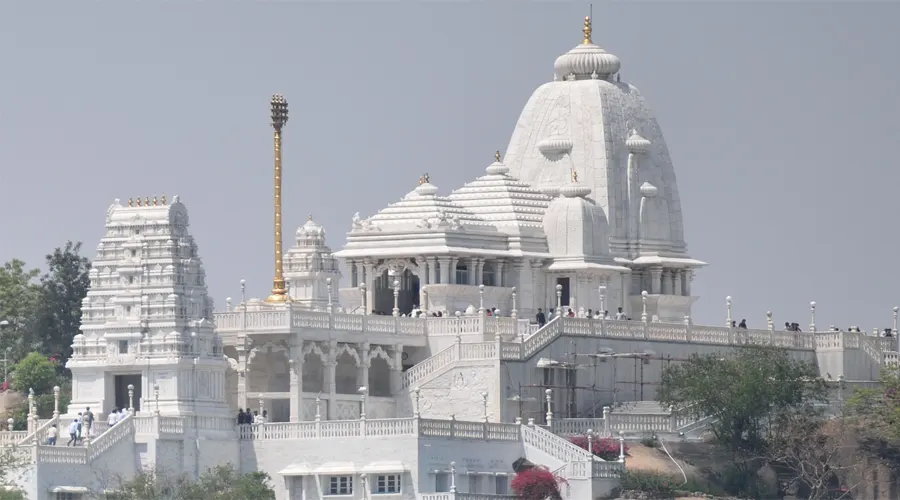Sita Ramachandra Swamy Temple
Located on the river Godavari in the village of Bhadrachalam, it is easy to spot the Sita Ramachandra Swamy Temple (also called Bhadrachalam). Although not among the oldest temples in the country, the construction of this temple dates back to the 17th century. Bhadrachalam is famous for its principal deity - Lord Rama. Vaikuntha Rama, to be more specific this form of Rama is not present anywhere else in India but here. Legend says that the deity imparts knowledge to worshippers. The temple is also famous for the various festivals celebrated here, namely, Vasanthotsavam, Brahmotsavam, and Vaikuntha Ekadashi.
History of Sita Ramachandra Swamy Temple
There are several myths and legends associated with the temple. The Bhadrachalam site is very closely related to Ramayana. It is said that Ram, Sita, and Lakshmana have stayed for some time at Parnasala, which is only 30 km from Bhadrachalam during their 14 years of Vanvasa. This was the same place where Sita was kidnapped by Ravana. According to a legend, a rishi named Bhadra lived here, a boon child of Meru and Menaka and a passionate devotee of Lord Rama, who was promised moksha by him. He did intense penance at the bank of river Godavari in Dandakaranya till Tretha Yuga was over. Lord Rama could not accomplish his promise given to Bhadra during Ramavatara.
Pleased by Bhadra’s unselfish devotion, Lord Vishnu manifested himself as Vykunta Rama, went to his devotee, and signaled his arrival by blowing Shanku, accompanied by Sita and brother Lakshmana and granted him moksha. The hillock on which deities were seated was the head place of Bhadra- Achala, the hill, and, hence, the place was named Bhadrachalam, after the name of Bhadra Maharishi.
Another legend associated with this place is Pokala Dhammaka. She was a true devotee of Lord Rama and was an inhabitant of Bhadri Reddy Palem. It is said that Lord Rama appeared in her dream and informed her about the existence of idols on the Bhadragiri hills. On the very next day, she started searching for the deities. On her way, she peeped into an anthill and found the deities hidden inside it. To take out the deities, she poured hundreds of pots of Godavari water on the anthill. She used to perform pooja daily and got a mandapam built with the help of local villagers. Lord Rama also told her that one day one of his devotees will construct a temple at this site. Dhamakka waited patiently for it and that devotee turned out to be Bhakta Ramadas.
Architecture of Sita Ramachandra Swamy Temple
The temple is divided into three parts. The first is believed to be the head of Bhadra, where a shrine is dedicated to him. Inside, on a rock structure, the supposed footprints of Rama can be seen. The second part of the temple is the sanctum where the central icon resides in a place considered equivalent to Bhadra’s heart. The third part is the Rajagopuram (main tower), which is located at Bhadra’s feet.
The temple has four entrances; there are 50 steps to be climbed to reach the main entrance. The Rajagopuram is located at the northern entrance, which is called the Vaikuntha Dwaram. Directly opposite the sanctum is a gold-plated dwajasthambam (flag post), on which are carved images of Garuda, the vehicle of Vishnu.
On the top of the vimana of the sanctum is an eight-faced Sudarshana Chakra with a thousand corners, that was engraved by Gopanna, who found it lying in the waters of the Godavari River.


























